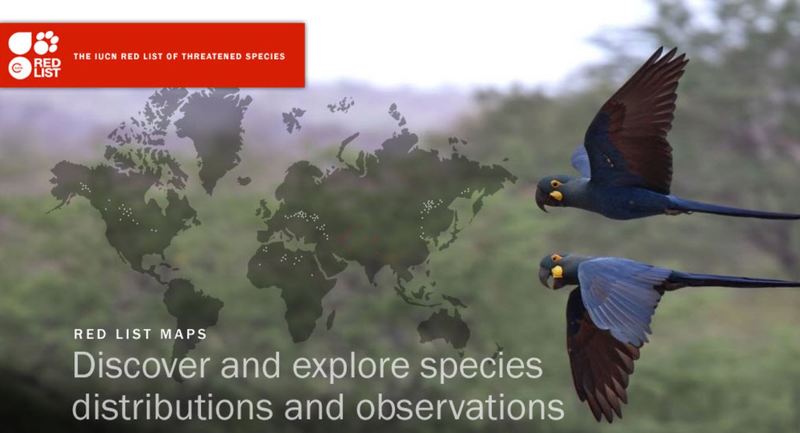What's New
Along with pages being regularly updated to reflect the new data available in each Red List update, new pages, tools and functionality are added to The IUCN Red List website at any time throughout the year. The most recent updates and additions to the Red List website are listed below.
For a list of previous updates and additions (since the start of 2020), click here.
New and updated pages |
|
| Summary Statistics | Spatial Data Download |
New and updated Tools and Files |
|
| Regional Assessments: Distribution Maps | |
Red List tools and guidance documents |
|
| Red List Guidelines: version 16 | IUCN Red List Webinars |
| Red List Petitions guidance document | |
Assessments |
|
| Assessment petition: Long-tailed Macaque | Green Status of Species assessment: Iberian Lynx |
| Assessment PDFs and DOIs | Spatial Data Download |
Assessment PDFs and DOIs
IUCN Red List version 2024-1: After each Red List update, PDFs are normally generated for all the newly published global species-level assessments and DOIs are assigned to these. As part of our planned upgrades to the Red List website and API we are working on a new PDF tool to support regional assessments and assessments of infrataxa, and improve coverage in existing PDFs. Production of new PDFs is therefore on hold, and we will communicate when these will be made available. In the meantime, we will continue to assign DOIs which will point to the corresponding assessment page on the website.
Assessment petition: Long-tailed Macaque
 All IUCN Red List assessments are open to challenge, and a petitions process is in place to handle cases where there is disagreement on an assessment that cannot be resolved through informal discussions. In 2023, a petition was lodged against the assessment for the Long-tailed Macaque (Macaca fascicularis). Notification of the ruling for this petition was published on the Petitions Page on 24 June 2024. Note that the ruling has not completely ended this petition, as a reassessment is required, therefore this species is still flagged as "under petition".
All IUCN Red List assessments are open to challenge, and a petitions process is in place to handle cases where there is disagreement on an assessment that cannot be resolved through informal discussions. In 2023, a petition was lodged against the assessment for the Long-tailed Macaque (Macaca fascicularis). Notification of the ruling for this petition was published on the Petitions Page on 24 June 2024. Note that the ruling has not completely ended this petition, as a reassessment is required, therefore this species is still flagged as "under petition".
Green Status of Species assessment: Iberian Lynx
The 2024-1 Red List update included the first Green Status of Species (GSS) assessment for Iberian Lynx (Lynx pardinus), currently assessed as Vulnerable on the Red List, the GSS status for this species is Largely Depleted.

Procedure for Handling of Petitions against Current Listings on The IUCN Red List of Threatened Species™
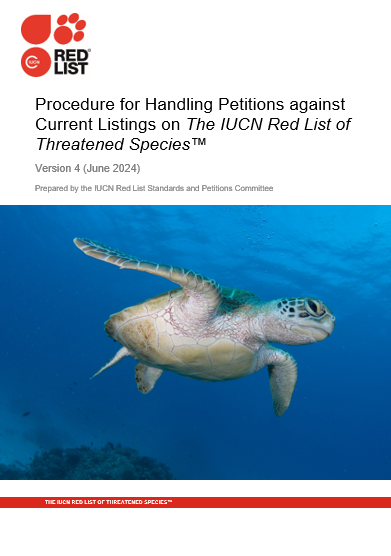 The Procedure for Handling of Petitions again Current Listings on The IUCN Red List of Threatened Species™ has been updated to version 4 (June 2024). Click here to download the current version of these guidelines.
The Procedure for Handling of Petitions again Current Listings on The IUCN Red List of Threatened Species™ has been updated to version 4 (June 2024). Click here to download the current version of these guidelines.
Summary Statistics page
Each time The IUCN Red List is updated, the Summary Statistics page (in the Resources and Publications section) is also updated to provide statistics for the most recent version of the Red List. The Summary Statistics page also includes links to the automated statistics tables. Note that from the 2022-1 Red List onwards, the calculation for proportion of threatened species now includes threatened (CR, EN and VU) and Extinct in the Wild (EW) species.
Spatial Data Download page
Each time The IUCN Red List is updated, the Spatial Data Download page (in the Resources and Publications section) is also updated to provide all the current map data for various groups of species (including polygon spatial data and point data, where available).
Red List Guidelines: version 16
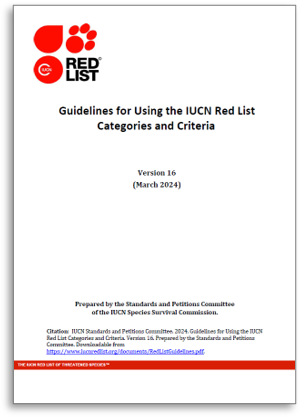 In March 2024, the Guidelines for Using the IUCN Red List Categories and Criteria were updated to version 16. To download the current version of the guidelines, click here.
In March 2024, the Guidelines for Using the IUCN Red List Categories and Criteria were updated to version 16. To download the current version of the guidelines, click here.
Regional Assessments: Distribution Maps
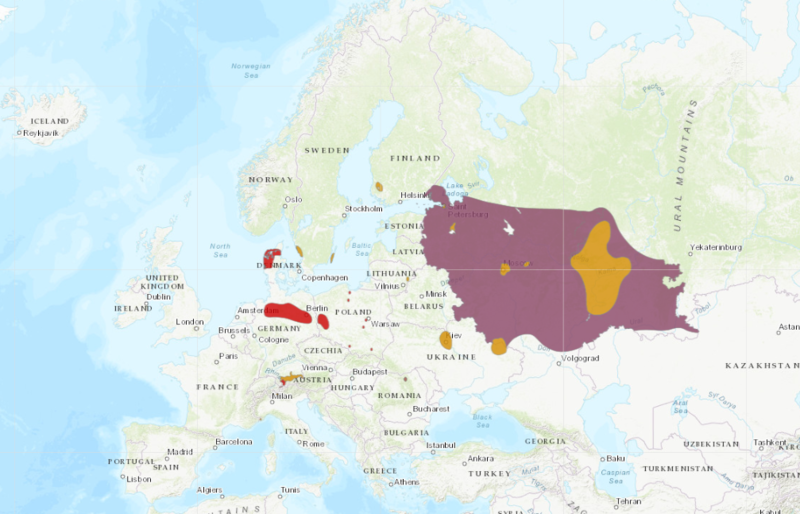 As from 2024-1, Regional assessments published on The IUCN Red List include distribution maps and the option of downloading these spatial data. Note that distribution maps for regional assessments may differ from the global assessment map for the same species (see Supporting Information page for more information on this).
As from 2024-1, Regional assessments published on The IUCN Red List include distribution maps and the option of downloading these spatial data. Note that distribution maps for regional assessments may differ from the global assessment map for the same species (see Supporting Information page for more information on this).
IUCN Red List Webinars
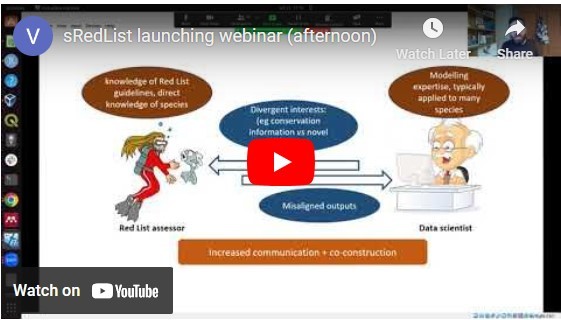 The number of IUCN Red List and Red List-related webinars available online is increasing. These are valuable training resources and as they become available, we are adding links to these webinars to the IUCN Red List Webinars page. In early 2024, links to webinars discussing sRedList and the Green Status of Species were added.
The number of IUCN Red List and Red List-related webinars available online is increasing. These are valuable training resources and as they become available, we are adding links to these webinars to the IUCN Red List Webinars page. In early 2024, links to webinars discussing sRedList and the Green Status of Species were added.

